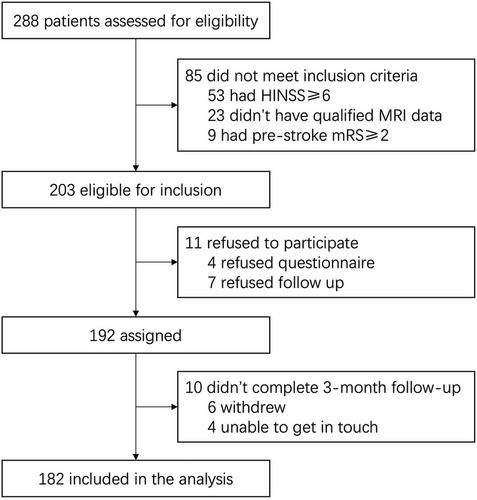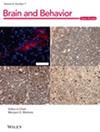Basilar Artery Tortuosity Increases the Risk of Persistent Dizziness and Unsteadiness After Posterior Circulation Infarction
Abstract
Background and Purpose
Basilar artery (BA) tortuosity is closely associated with posterior circulation infarction (PCI) and dizziness/unsteadiness. This study aims to determine the relationship between BA tortuosity and the outcome of dizziness and unsteadiness in PCI patients.
Method
This study prospectively recruited PCI patients presenting with dizziness and unsteadiness. BA tortuosity was diagnosed based on Smoker's criteria. The BA tortuosity index (BATI) was measured from magnetic resonance angiography (MRA) images. Posterior circulation was divided into proximal (medulla oblongata and posterior inferior cerebellar), middle, and distal territories. Symptoms, risk of falls, and quality of life were followed up in 3 months after stroke. Logistic regression was used to identify possible factors associated with the persistence of dizziness and unsteadiness.
Results
Among 182 PCI patients presenting with dizziness and unsteadiness, 97 (53.3%) had BA tortuosity, including 19 (10.4%) with moderate-to-severe BA tortuosity. At the 3-month follow-up, 58 (31.9%) patients continued to experience dizziness and unsteadiness, with significantly decreased quality of life and a high risk of falls. Binary logistic regression analysis identified moderate-to-severe BA tortuosity (OR, 4.474; 95% CI, 1.591–12.579; p = 0.004) and lesions involving the proximal posterior circulation territory (OR, 2.146; 95% CI, 1.097–4.199; p = 0.026) as risk factors for persistent dizziness and unsteadiness after PCI, while thrombolysis (OR, 0.280; 95% CI, 0.079–0.992; p = 0.049) as a protective factor. BATI (OR, 1.072; 95% CI, 1.028–1.119; p = 0.001) was also independently associated with dizziness and unsteadiness after PCI.
Conclusion
Prominent BA tortuosity increases the risk of persistent dizziness and unsteadiness after PCI, leading to a high risk of falls and decreased quality of life. This warrants more attention in clinical practice.


 求助内容:
求助内容: 应助结果提醒方式:
应助结果提醒方式:


